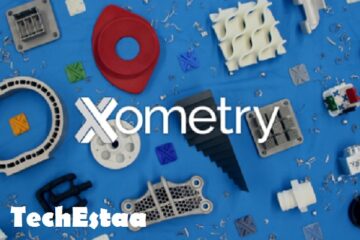Smart homes are becoming increasingly popular as technology advances, and we move towards a more connected world. The Internet of Things (IoT) is at the heart of this revolution, enabling people to control their home environment with greater ease and convenience than ever before. From security systems to heating controls, smart devices are transforming our lives in ways that were once unimaginable.
In this blog post, we’ll explore the rise of smart homes and how the IoT is changing the way we live for the better.
What is the IoT?
The Internet of Things (IoT) is a network of devices that are connected to the Internet and can communicate with each other. These devices include anything from smartphones and laptops to sensors, thermostats, cameras, and appliances. The IoT encompasses everything that’s been designed to work together in order to create a smarter home environment.
Through the use of smart technology, homeowners can control their heating systems remotely or even set automatic schedules for when they’re away from home. Smart security systems allow people to monitor their homes while they’re out and receive alerts if anything suspicious happens. Devices such as Amazon Echo or Google Home function as voice assistants that allow you to interact with various smart devices around your home hands-free.
The IoT has revolutionized our homes by making them more efficient, convenient, and secure than ever before. With this technology at our fingertips, we have access to an endless array of possibilities for improving our daily lives!
Benefits of the IoT
The Internet of Things (IoT) has transformed the way we live our lives. From smart refrigerators to self-driving cars, IoT technology is everywhere. Here are some benefits of IoT:
1. Convenience: Smart homes allow you to control your appliances with a few taps on your phone or voice commands.
2. Efficiency: With connected devices, energy usage can be monitored and optimized for efficiency, leading to cost savings.
3. Safety: IoT-enabled home security systems offer increased safety and peace of mind through features like motion detection and remote monitoring.
4. Health care: The use of wearables in healthcare allows doctors to monitor patient health remotely, improving patient outcomes and reducing hospital visits.
5. Transportation: Self-driving cars powered by IoT technology could reduce traffic congestion while also making driving safer.
The benefits of the Internet of Things are vast and far-reaching across various industries beyond just personal convenience at home – from healthcare to transportation – offering improved efficiency, safety, and quality-of-life enhancements that will only continue as its adoption grows exponentially over time.
How does the IoT work?
The IoT is a network of devices that are connected to the internet and can communicate with each other, enabling them to share data and perform tasks without human intervention. The way it works is by using sensors or smart devices that collect data from various sources such as appliances, vehicles, wearable technology, and more.
This data is then transmitted to cloud-based software platforms where it’s analyzed and used to trigger actions in response. For example, an IoT-enabled fridge could detect when you’re running low on milk and automatically order more for delivery.
IoT systems rely on complex infrastructures such as wireless networks, microcontrollers, machine learning algorithms, and cloud computing services among others. These components work together seamlessly through standard communication protocols like Wi-Fi or Bluetooth.
One advantage of this system is that users can control their devices remotely via mobile apps or voice assistants like Amazon Alexa or Google Assistant; they also receive real-time notifications about performance statistics or maintenance needs.
However, security remains one of the biggest challenges associated with the IoT due to its potential vulnerability to hackers. Nevertheless, experts predict continued growth in this exciting field as innovation continues to make our lives easier than ever before!
What are some of the challenges with the IoT?
While the Internet of Things (IoT) has a lot of potential, there are also many challenges that come along with it. One major challenge is security. With so many devices connected to each other and the internet, there is a greater risk for hackers to access personal information or even take control of devices. This can lead to serious consequences such as theft or privacy breaches.
Another challenge is the compatibility between different IoT products and technologies. As more companies enter the market with their own smart home devices, it can become difficult for consumers to manage all these different systems at once. Additionally, software updates may be required frequently which can create compatibility issues.
The cost associated with implementing IoT technology in homes might be another challenge. Smart home devices tend to be more expensive than traditional ones since they have advanced features that require complex programming and use sophisticated sensors. Furthermore, some older homes may require extensive rewiring or retrofitting before becoming fully compatible with smart home technology.
User education remains an important hurdle when adopting IoT technology in households.
The average consumer might not fully understand how these interconnected systems function nor how they could potentially affect their daily lives if mishandled.
While there are certainly advantages to embracing the IoT trend within our homes; stringent security measures must be put into place firstly by manufacturers and secondly by users themselves who should take care in understanding what data they share and whom they share it with online.
Conclusion
The Internet of Things has revolutionized the way we live in our homes. The rise of smart homes and connected devices has made our lives easier and more convenient. We can now control lighting, heating, security systems, and even kitchen appliances with a simple voice command or tap on our smartphones.
However, as with any new technology, there are still some challenges that need to be addressed. Security concerns are one major issue that needs to be tackled before IoT devices become widespread in every home. There is also the issue of interoperability between different manufacturers’ products.
Despite these challenges, it is clear that the future belongs to smart homes and IoT devices. As technology continues to advance at an unprecedented pace, we can expect even more exciting developments in this field over the coming years. With its potential to transform how we live and interact with our surroundings, there’s no doubt that the Internet of Things will continue to shape our lives for many years to come.



